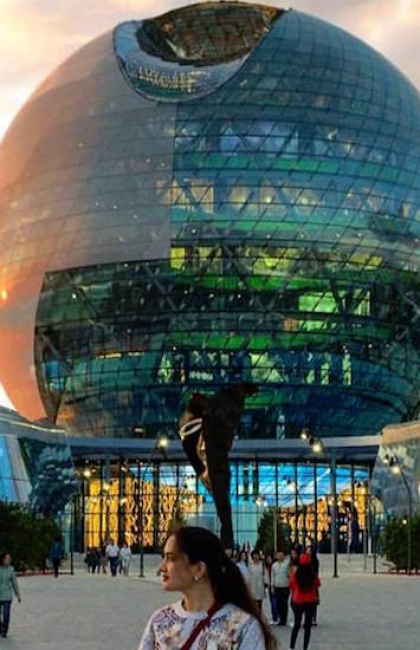Astana Opera
The construction of the Astana Opera Theater generated a lot of anticipation and buzz. The project was led by Behgjet Pacolli, former President of Kosovo and director of the Mabetex company. Renato Arcetti, an Italian architect, brought Pacolli's vision to life, while masters from 33 countries collaborated on the building's exterior and interior design.
In 2010, construction on the theater began on the left bank of Astana, in an area that was once considered remote with few nearby attractions. However, today the theater is at the heart of the city. The Astana Opera officially opened its doors in 2013 with the premiere of «Birzhan and Sara», a Kazakh opera.
One unique feature of the Astana Opera is that the project took into account the strengths and weaknesses of existing theaters worldwide, with the aim of building a new standard for arts buildings. Additionally, the builders sought input from performers who would eventually work at the Astana Opera.

Classic architecture with a national twist
The Astana Opera Theater is situated on a hill, with a stepped terrace leading up to it. The surrounding area is adorned with natural stone, while the facade is finished with a combination of marble, brass, and copper.
At the entrance, visitors are greeted by stunning sculptures by Kazakh artists Murat Mansurov and Toktar Ermekov. The «Kobyz Player» and «A Girl with Zhetygen» sculptures, both depicting traditional Kazakh musical instruments, were crafted in Italy and seamlessly blend into the building's facade. Above the entrance, a chariot with four horses is driven by the Scythian queen Tomiris, adding a grandeur touch to the building's roof.
Inside, the main foyer exudes opulence with a two-tier ceiling, adorned by a magnificent chandelier weighing 1600 kg (3527 lb). The walls are hand-painted in 3D, showcasing two of Kazakhstan's natural wonders, Lake Borovoe and Charyn Canyon.
The theater comprises two stages, with the main hall seating 1250 spectators, and a chamber hall designed for 250 people. In addition to these, there are auxiliary halls, a children's theater studio, and press rooms. The stage is mobile and multifunctional, allowing it to rise, fall, expand and contract, while the orchestra pit is designed in multiple levels, capable of accommodating over 100 musicians.
The stage curtain is made of flame-retardant velour and can silently open in three different ways, vertically at a speed of 2 meters per second, as well as horizontally and diagonally. The audience hall itself is a true work of art, with parterre and tiers designed in rich amber-red tones. The balconies are decorated with Kazakh national ornaments, adding a touch of traditional flair to the grandiose design.
The Astana Opera Theater boasts of its rehearsal rooms that are equal in size to the main stage, providing musicians and singers the opportunity to practice in the same acoustics as the actual performance. It is a rare feature that only a few theaters in the world can match. The theater has 26 such rehearsal rooms, each equipped with special types of oak floors and walls that have holes to absorb excess noise.

An ample repertoire
The theater's repertoire showcases the works of national composers, including «Birzhan and Sara» by Mukan Tulebaev, «Abai» by Akhmet Zhubanov and Latif Hamidi, «Kyz Zhibek» by Yevgeny Brusilovsky, and the ballet «Karakoz» with music by Gaziz Zhubanov. Additionally, the theater also features world-renowned classics such as works by Giuseppe Verdi, Giacomo Puccini, Georges Bizet, Pyotr Tchaikovsky, Aram Khachaturian, Ludvig Minkus, Adolphe Adam, and many others.
Performing at the Astana Opera is considered a great honor, and renowned Kazakh artists such as Bibigul Tulegenova, Alibek Dnishev, and Nurzhamal Usenbayeva have graced its stage. The theater has also welcomed distinguished international artists such as Placido Domingo, Zubin Mehta, Elena Obraztsova, Valery Gergiev, José Carreras, and Anna Netrebko.
How to get there?
Address: Astana, 1 Kunaev St.
Astana Opera can be reached by buses No. 12, 21, 26, 32, 35, 37, 46, 50, 53, 70, 300, 305, 312, 803, and 807.


 (1)_420x650_4ab.jpg)
_420x650_4ab.jpg)